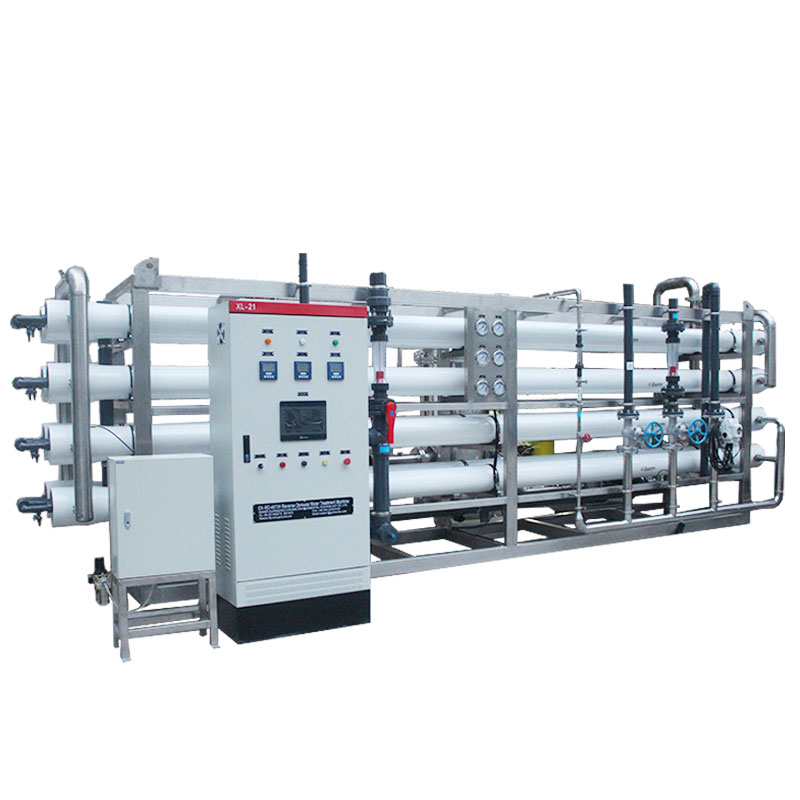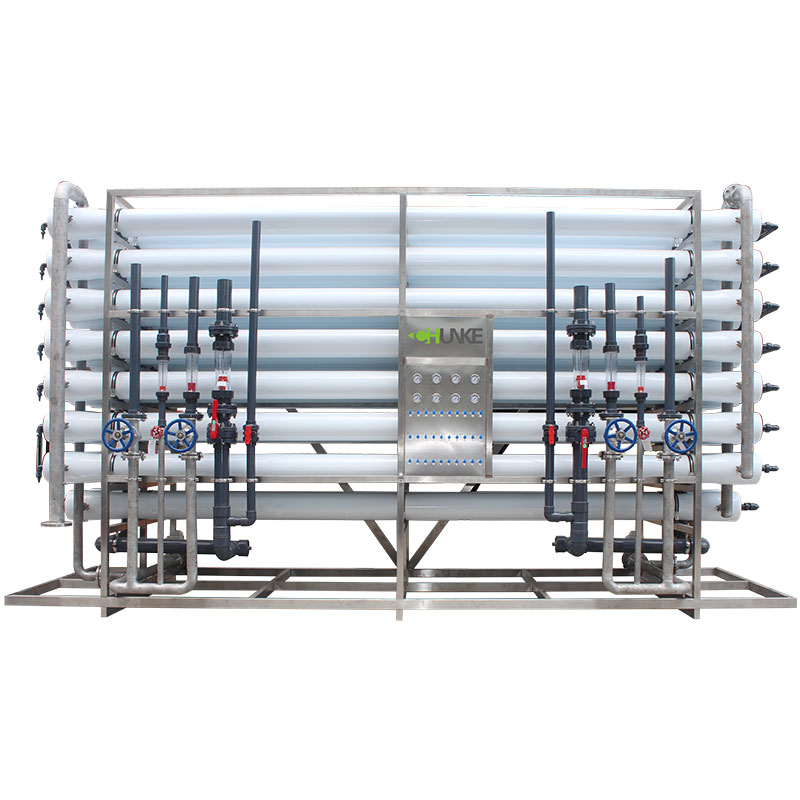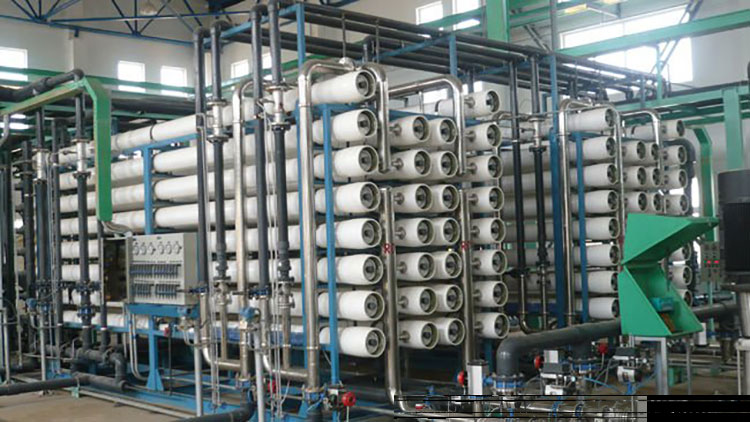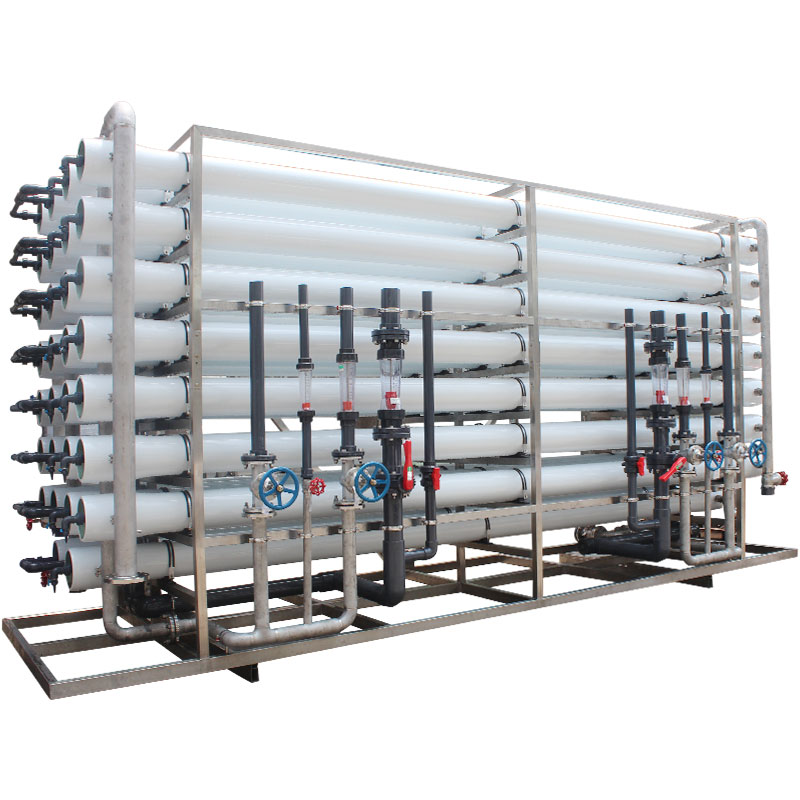Is the 18000LPH desalination RO system for commercial or industrial use?
Seawater desalination reverse osmosis system is an important means to solve the current water shortage problem, especially in coastal cities and arid areas. With the increase in water demand, seawater desalination systems of different capacities are widely used in various scenarios, among which the 18000LPH (i.e., 18,000 liters of seawater per hour) seawater desalination reverse osmosis system is undoubtedly an attractive choice.
However, is such a capacity system suitable for commercial use or more industrial use? This article will explore this issue in depth.

What is the basic principle of seawater desalination reverse osmosis system?
Before discussing the use of 18000LPH system, it is necessary to understand the working principle of seawater desalination reverse osmosis system. Reverse osmosis technology removes dissolved salts and impurities from seawater through a semipermeable membrane to produce drinkable fresh water. This process relies on the pressure provided by a high-pressure pump to pass seawater through the semipermeable membrane, while salts and impurities are blocked on one side of the membrane, and pure fresh water flows out from the other side.
What is an 18000LPH seawater desalination reverse osmosis system?
As the name suggests, an 18000LPH seawater desalination reverse osmosis system refers to a system that can process 18,000 liters of seawater per hour. This processing capacity is medium to large in seawater desalination equipment and can meet a considerable scale of water demand. In order to better understand the practical application of the system, we need to conduct a detailed analysis of its specific specifications, energy consumption, operating costs, and water quality output.
1. Processing capacity: The processing capacity of 18,000 liters per hour means that the system can produce 432,000 liters of fresh water per day, which is enough to meet the daily water needs of hundreds to thousands of people.
2. Energy consumption and cost: The reverse osmosis process of seawater desalination requires a high-pressure pump to provide sufficient pressure, which means that the operation of the system consumes a lot of electricity. Normally, the energy consumption of a seawater desalination reverse osmosis system is between 3 and 6 kWh/m3. According to this estimate, the daily operating energy consumption of an 18,000LPH system will be very considerable.
3. Water quality output: Reverse osmosis technology can effectively remove salt, heavy metals, microorganisms and other impurities from seawater to produce fresh water that meets drinking water standards. For 18,000 LPH systems, the water quality produced is usually very stable and can meet various water use standards.

Analysis of commercial use of the system
First, we need to consider whether the 18,000 LPH seawater desalination reverse osmosis system is suitable for commercial use. The definition of commercial use is broad, usually including hotels, resorts, ships, island water supply facilities and other places that require large amounts of fresh water but are not industrial-scale.
1. Hotels and resorts: For large hotels and resorts, especially those located in coastal or island areas, fresh water supply can be a huge challenge. An 18,000 LPH system can provide sufficient fresh water supply for hotels or resorts with hundreds of rooms, while also ensuring the water quality of swimming pools, landscape water and other ancillary facilities.
2. Ships and offshore facilities: Large ships and offshore facilities such as oil platforms also require a stable supply of fresh water. The 18000LPH desalination system is of moderate size and produces sufficient water, making it suitable for installation on large ships to provide daily fresh water for crew members and equipment.
3. Island water supply facilities: For some islands far away from the mainland, fresh water resources are often scarce. The 18000LPH system can be used as part of the island water supply facilities to ensure the drinking water and daily water needs of island residents and tourists.
From the above analysis, it can be seen that the 18000LPH seawater desalination reverse osmosis system is very suitable for commercial applications. Whether it is a hotel, resort, ship or island water supply facility, a system of this capacity can provide a reliable and continuous supply of fresh water.

Analysis of industrial uses of the system
In addition to commercial uses, the 18000LPH seawater desalination reverse osmosis system also has broad application prospects in the industrial field. Industrial uses usually involve larger-scale water needs, such as factory cooling water, production water, and even process water for power plants and chemical plants.
1. Factory cooling water: Some coastal factories, such as power plants and refineries, usually require a large amount of cooling water. Although the processing capacity of 18000LPH may not be enough for these large factories, it still has certain application value as an auxiliary water source or emergency water supply system.
2. Production water: Some industrial processes require the use of high-purity water, such as electronic manufacturing, pharmaceuticals, food processing and other industries. The 18000LPH seawater desalination system can provide these industrial processes with high-quality fresh water that meets the standards.
3. Small industrial parks: For some smaller industrial parks or single factories, the 18000LPH system can be used as the main water source system to meet the daily water needs of different factories in the park.
From the perspective of industrial use, the 18000LPH seawater desalination reverse osmosis system also has certain application potential in small and medium-sized industrial scenarios. However, for heavy industries or large factories that require a lot of water, this system alone may be difficult to meet the needs, and often needs to be used in combination with other water treatment facilities.
Comparison between commercial and industrial use
Through the analysis of the 18000LPH seawater desalination reverse osmosis system in the commercial and industrial fields, it can be seen that it has a wide range of application potential in both. However, the applicability and economy of the system vary significantly in different fields.
1. Economy: Commercial use tends to focus more on the cost-effectiveness of the equipment. Since the freshwater demand of commercial facilities is relatively stable and there is no peak period for industrial water use, the 18000LPH system can fully exert its value in commercial scenarios. Industrial use, on the other hand, focuses more on the stability and scale of water supply. Although the 18000LPH system is effective in some small industrial scenarios, it may not be economical enough in large-scale industrial production.
2. Applicability: In terms of applicability, the 18000LPH system is more widely used in commercial scenarios. Especially for hotels, resorts, etc. located in coastal or island areas, the reliability of freshwater supply is the primary consideration. In contrast, the water demand in industrial scenarios is more complex. In addition to requiring a large amount of fresh water, it may also involve different water quality requirements and supply stability.
3. Maintenance and operation: Commercial use usually requires the system to be simple to operate and easy to maintain. The 18000LPH system is often designed to be easy to use and suitable for non-professional operators. In industrial scenarios, the maintenance of the system may require more professional skills and equipment support.

Conclusion: Commercial or industrial use?
In summary, the 18000LPH seawater desalination reverse osmosis system has a certain intersection between commercial and industrial use, but is more suitable for commercial use. Its processing capacity is sufficient to meet the water needs of commercial facilities such as large hotels, resorts, ships and islands. At the same time, the system is easy to operate and has moderate maintenance costs, which makes it an ideal choice in commercial scenarios.
However, in industrial use, although the 18000LPH system can be used in certain specific scenarios, its scale and economy may not be as good as other specially designed industrial water treatment systems. Therefore, if it is for large industrial scenarios or industrial processes that require a large amount of water, you may need to consider larger capacity or more professional water treatment equipment.
In general, the 18000LPH seawater desalination reverse osmosis system shows greater advantages in the commercial field, especially in occasions with high water quality requirements and relatively large water consumption, and can provide a continuous and efficient supply of fresh water.




